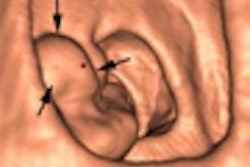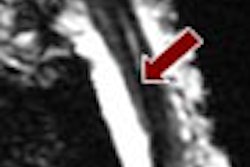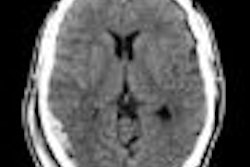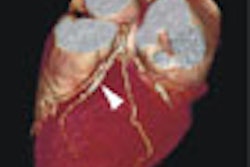VIENNA - Attendees at this week's European Congress of Radiology (ECR) got a closer look at how radiology is practiced in Israel at the conference's "ECR meets Israel" session on Sunday. Representatives from the country's radiology community described how PACS helps the country with its unique healthcare needs, and also outlined Israel's breast screening program.
PACS is indispensable in emergency departments in Israel treating victims of terrorist attacks. The ability of radiologists, surgeons, and other medical specialists to use multiple diagnostic workstations to evaluate a patient simultaneously facilitates rapid treatment decisions.
PACS also eliminates the problem of misplaced films, which was a serious issue prior to its installation in major Israel hospitals in 1998. Dr. Ahuva Engel, a radiologist at the Rambam Medical Center in Haifa, presented this information during the session.
CT exams are an intrinsic part of diagnostic evaluation of 20% to 30% of all victims of the 148 terrorist attacks that have taken place in Israel between 2000 and 2006. Some 42% of the casualties of Israel's 2006 war also had one or more CT procedures performed.
Patients arrive at emergency departments between five and 20 minutes after a terrorist attack. Emergency physicians, radiologists, radiology technologists/radiographers, and surgeons initiate a predetermined protocol to deal with any mass-casualty situation.
As soon as a hospital is notified of an attack, all elective radiology procedures cease. Technologists move a minimum of two additional portable x-ray machines and two ultrasound machines into the emergency department, and are joined there by two radiologists. Additional mobile PACS diagnostic workstations are also set up in the emergency department for use by surgeons.
Walkie-talkies are used by all front-line staff and physicians. Patients are assessed based on injuries from primary blasts (which affect the lungs, bowels, and eardrums), secondary blasts (with penetrating wounds, often from shrapnel), and from tertiary blasts (in which victims have head, cervical spine, limb, and inhalation injuries). Almost all victims have radiographs, but the most critically injured go directly to CT.
"3D reconstruction is especially useful in evaluating which shrapnel should be removed in a victim with multiple shrapnel injuries," Engel said. "3D enables the surgeons to determine what fragment may be life-threatening. Patients with multiple shrapnel penetrations may need multiple operations over time to remove all foreign objects, which can include pieces of wristwatches."
PACS and multislice spiral CT, combined with the prolific use of walkie-talkies, have significantly accelerated diagnosis and treatment decisions. When dealing with a large number of critically injured patients, the value of these technologies are indispensable, according to Engel.
Israel's breast screening program
More than 60% of women over the age of 50 comply with Israel's National Screening Program for early detection of breast cancer, according to Dr. Dorith Shaham, head of the center for thoracic imaging at Hebrew University Medical Center in Jerusalem.
In 2006, 328 breast cancers were detected through the free screening program; 36% of the women with newly detected cancer were asymptomatic.
The Israel Family Physician Association and the Israel National Oncology Council recommend that women between 50 and 74 years of age without a family history of breast cancer have a mammogram every two years. Women with a family history are recommended to have a baseline mammogram at age 40 and yearly thereafter.
Women with BRCA1/BRCA2 mutations also receive a breast MRI each year, Shaham said. Some 350 families in Israel carrying the gene have been identified and are monitored so that mammograms, genetic testing, and breast MRIs can be offered to young women in a timely fashion.
The Israel Cancer Society provides mobile mammography systems to rural communities where mammography is unavailable, so that no woman is deprived of receiving the exam due to geographic location.
Mammography screening rates for Muslim Arab women is lower than that of Jewish women. The rates become comparable in women 55 to 65 years old, according to Shaham.
By Cynthia Keen
AuntMinnie.com contributing writer
March 10, 2008
Related Reading
Multidetector CT angiography aids diagnosis of chest pain in emergency department, December 24, 2007
FAST proves useful as triage tool in wartime, June 20, 2007
Israeli air force trims inappropriate MRI use, October 3, 2006
Global lifestyles, immigration patterns bring changes in breast cancer screening, April 14, 2006
ACR criteria cut imaging costs in Israel, January 11, 2005
Copyright © 2008 AuntMinnie.com



















